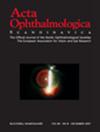Macular edema following ophthalmic surgery
Abstract
Cystoid macular edema (CME) is a well known and common postoperative complication in cases undergoing ophthalmic surgeries. CME is the result of the disturbance of the blood-aqueous barrier (BAB) and blood-retinal barrier (BRB), leading to increased vascular permeability resulting in macular edema. Inflammation and vitreous traction on the macula may contribute to the development of macular edema. Fluid accumulation mainly in the outer plexiform layer is a significant cause of visual impairment. A higher incidence of CME observed in patients with pre-existing vascular or inflammatory conditions and/or vitreous pathologies. The rationale for clinical or surgical treatment of macular edema is based on the understanding and the inhibition of these pathophysiological mechanisms. Advances in imaging technology such as optical coherence tomography (OCT) and OCT angiography (OCT-A) are tremendously useful tools that provide important information regarding the anatomical integrity of the retina, its vascular damage, or the existence of epiretinal tissue that adds a tractional component. Pars plana vitrectomy (PPV) is a viable option in the management of CΜE, firstly helps to release the tractional component, sometimes underestimated, and secondly reduces the inflammatory components from the vitreous cavity. In our days vitrectomy has become a much safer surgical procedure, serious complications, such as retinal detachment are becoming less frequent and although the first line treatment for post-surgical CME is medical, PPV should not be delayed in order to avoid the sequelae of longstanding macular edema.

 求助内容:
求助内容: 应助结果提醒方式:
应助结果提醒方式:


